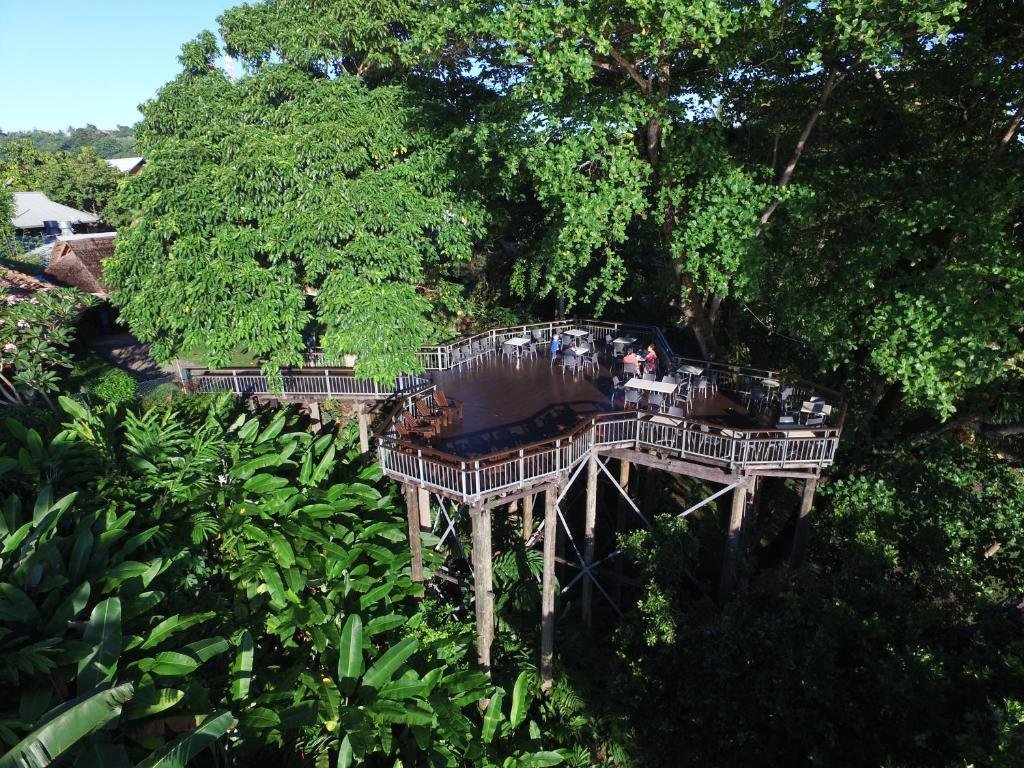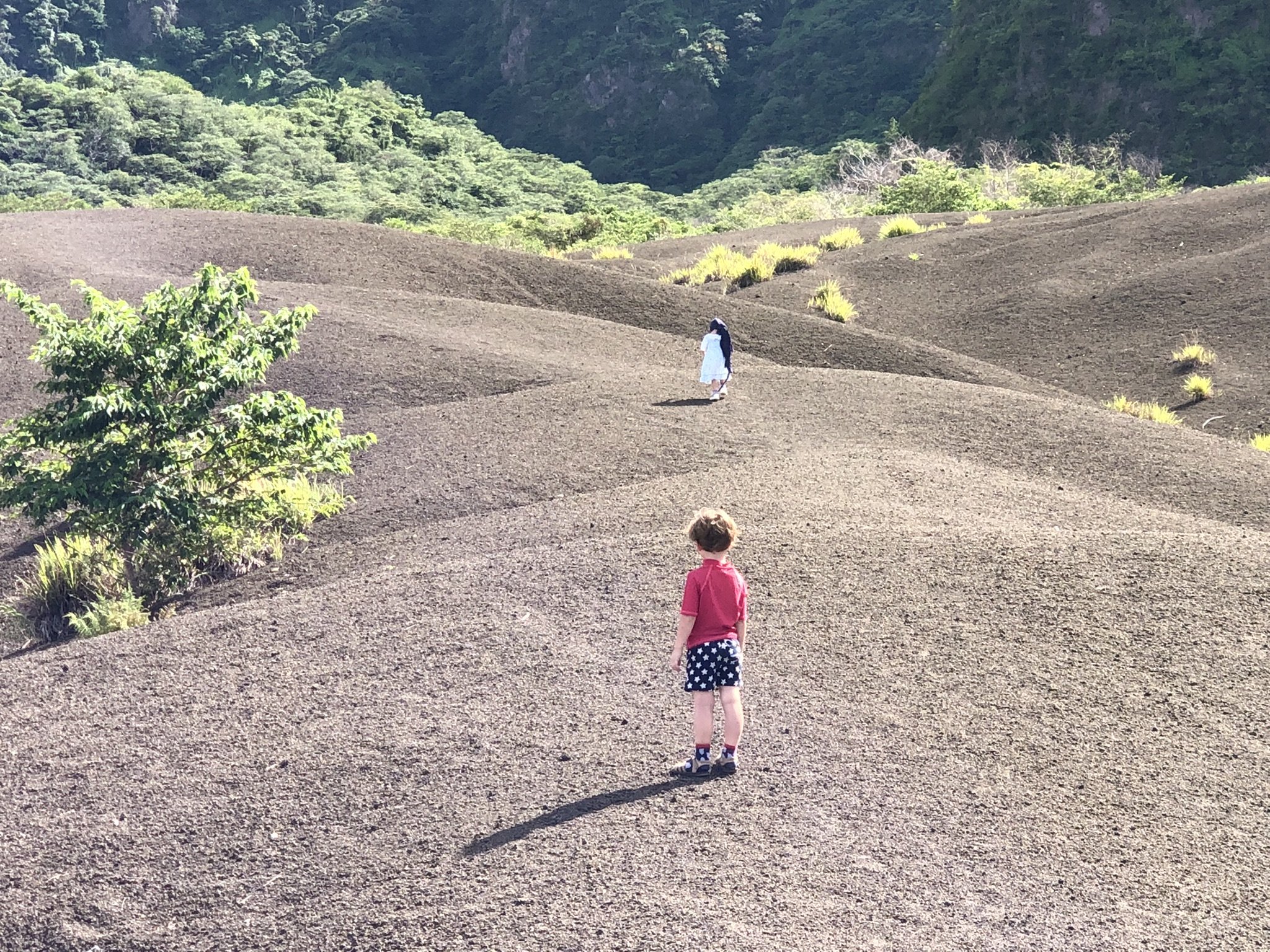
East New Britain,
an adventure in the shadow of Tavurvur!
East New Britain
Home to Mount Tavurvur
A Province Where History and Nature Collide
Located on the northeastern tip of New Britain Island, East New Britain Province is a fascinating blend of natural beauty, volcanic activity, and wartime history. The twin towns of Rabaul and Kokopo tell a powerful story — once the bustling capital, Rabaul was largely buried under ash after the dramatic eruption of Mount Tavurvur in 1994.
Today, Kokopo serves as the provincial hub, offering a gentler pace of life along a scenic coastline that overlooks the Duke of York Islands and, in the distance, the jagged outline of New Ireland. The region is volcanic, fertile, and lush — a place where steaming vents and hot springs coexist with coconut plantations and coral reefs. Divers flock here for wrecks and pristine marine biodiversity, while history buffs explore Japanese WWII tunnels and bunkers.
The province is also rich in Tolai culture, and traditional music and ceremonies remain an integral part of daily life. Whether watching Tavurvur release a plume of smoke at sunrise or taking a boat out into the calm, clear waters of Blanche Bay, East New Britain offers an experience that is as deeply human as it is spectacularly geological.
Family Time in Kokopo:
Volcano Views and Underwater Wonders
For our family vacation to East New Britain, we based ourselves in Kokopo, staying at the Rapopo Plantation Resort — a quiet retreat with breathtaking views of Mount Tavurvur. This infamous volcano, whose 1994 eruption devastated nearby Rabaul, stood quietly smoking on the horizon, a constant reminder of the island’s powerful forces. Our resort overlooked the shimmering sea, with the Duke of York Islands just across the bay and the outline of New Ireland far beyond.
We spent our days exploring this unique corner of Papua New Guinea: snorkeling in crystal-clear waters teeming with colorful fish, diving among coral reefs and WWII shipwrecks, and walking through coconut plantations in the late afternoon light. The province offered something for everyone — nature, history, and quiet beauty. I celebrated a milestone birthday there in early June, surrounded by my family, in a place that felt both remote and welcoming.
Our time in Kokopo wasn’t rushed. It was slow mornings and wide horizons, volcanic landscapes and rich underwater worlds. It was about stepping back from the everyday and soaking in a new perspective — one shaped by nature’s raw power and the quiet resilience of the people who live in its shadow.
-
Snorkeling
-

Diving
-

Traditional canoe
-

Swimming
-

Boat trip
-

Bird Watching
-

Hiking
-

Historical tour
Every day, we were dazzled by the natural beauty that surrounded us. The beach at Rapopo Plantation Resort, stunning in its own right, served as the starting point for our adventure in the Duke of York archipelago. Here, we joyfully met the children from Mioko Island, who kindly guided us through their village. We explored the crystal-clear waters, snorkeling and discovering an exceptional marine biodiversity.
What truly left an impression on us was our encounter with dolphins. As we sailed peacefully, these graceful creatures came to play around our boat. Their elegant leaps and acrobatics created a magical moment for both the children and us.
On another day, we ventured near Mount Tavurvur, walking through an apocalyptic landscape where nature was slowly reclaiming the land after the last eruption in 2014. Later, we crossed a stream emitting intense smoke, a sure sign of high temperatures. The ochre color of the water and the smell of rotten eggs were clear indicators of the abundant sulfur present. It was a fascinating and unique experience.
I also made sure to visit the military cemetery, where I was struck by the youth of the Australian soldiers who had fallen here while trying to prevent the Japanese invasion. Then, at the museum, we were able to admire impressive remnants from the Pacific War, including tanks, planes, and anti-aircraft guns. It provided us with a poignant testimony of a painful chapter in the local history.
Mount Tavurvur in the distance,
as seen from our room
Welcome at
Rapopo Plantation Resort
Direct access
to the beach
Sunset over
Blanche Bay
Remnants
of the Pacific War
Approaching
Mount Tavurvur
Excursion through the
Duke of York Archipelago
Our journey through the Duke of York Islands begins with an unforgettable encounter: dozens of dolphins dancing at the bow of our dinghy, putting on an exhilarating show. Their joyful presence stays with us for a while, adding a touch of wonder to our island-hopping adventure.
We then drop anchor near some strange, towering rock formations that rise from the sea like sleeping giants. Hidden behind them, we discover a small natural shelter—an idyllic spot for a swim. The crystal-clear water is simply irresistible. Without hesitation, we plunge into this aquatic paradise.
Next stop: Mioko Island, where a cheerful group of children greets us with laughter and curiosity. They proudly show us around their corner of paradise, sharing stories of their daily life and culture. It’s an unexpected and heartwarming exchange.
We end this perfect day with a snack on Little Pigeon Island—a peaceful haven where time seems to stand still. We savor fresh fruit while soaking in the panoramic ocean views.
A perfect day, filled with magic, laughter, and unforgettable family moments.
The Dolphins' Dance






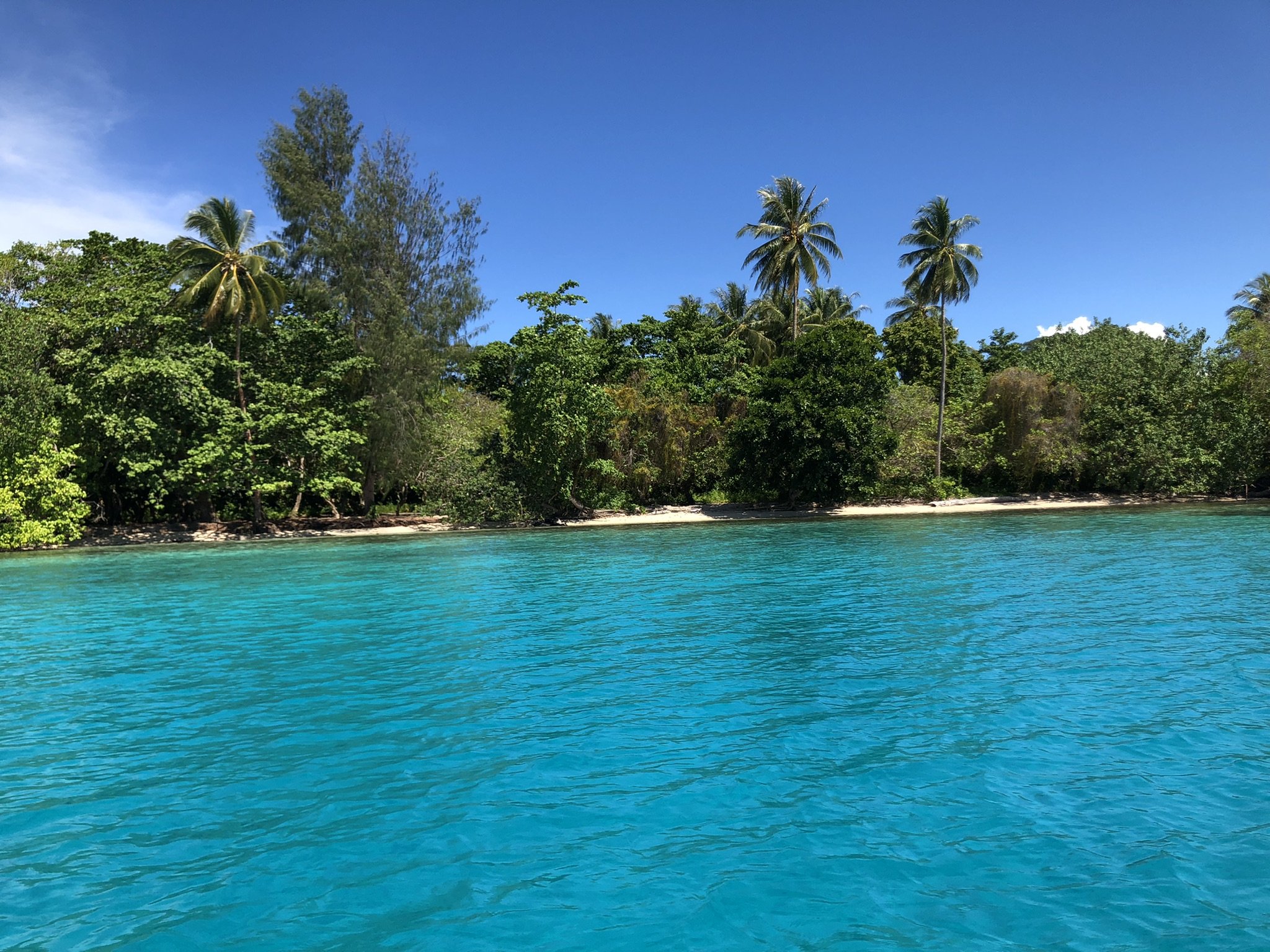

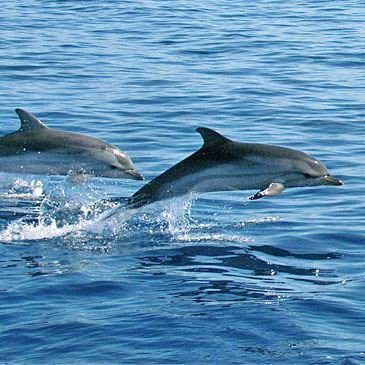
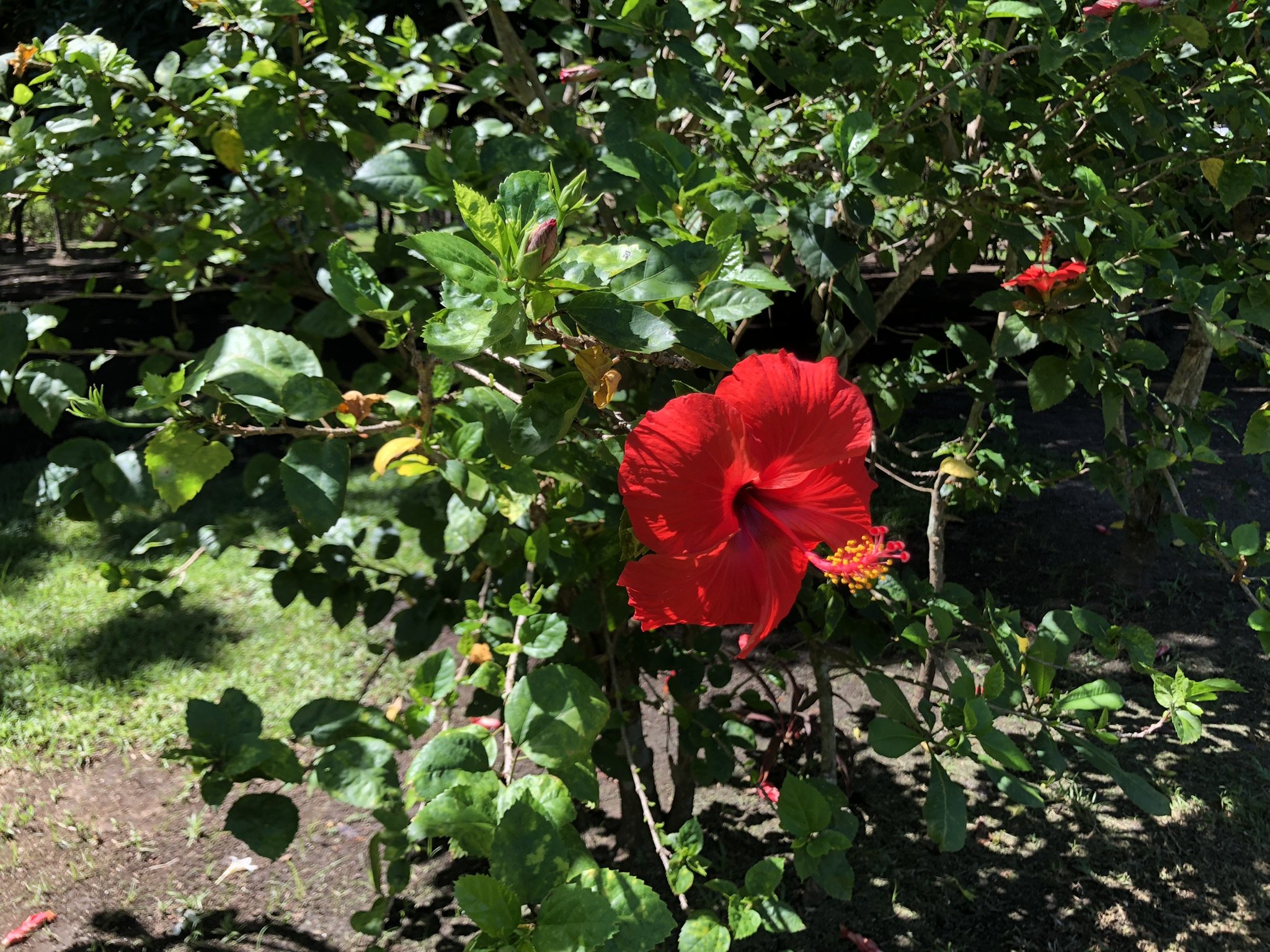


Mioko: The Island of Children
Mount Tavurvur and
Hot Spring
That morning, we had planned to set off around 4 a.m. to hike up to the summit of Mount Tavurvur — a dramatic volcano we’d been admiring from afar for several days and had even approached by boat. But as travel sometimes goes, a miscommunication and poor coordination from the agency forced us to change our plans — a real disappointment, especially since it happened on my birthday!
Instead, we were offered a later departure by bus to get as close as possible to the volcano, although a full ascent was no longer possible due to the intense heat expected later in the day.
Still, we were excited to get up close to this sleeping giant.
As we approached the Hot Springs — a sulphur-laden stream that paints the landscape in stunning shades of ochre red — our disappointment slowly gave way to wonder. The scenery was simply magical, and getting so close to Tavurvur, even without reaching the top, still felt like a rare and powerful experience.
Mount Tavurvur
in All Its Moods
Crédit photo: AFP-OLIVIER BLUETT
Crédit photo: AFP-OLIVIER BLUETT
Diving into History and Wonder
in Blanche Bay
How can anyone resist the pull of such crystal-clear waters? That day, we were invited to explore the emerald depths of Blanche Bay. Equipped with mask, snorkel, and fins, we dove into a mesmerizing underwater world. Hundreds upon hundreds of fish in all shapes and sizes, stunning corals, sea stars, and an endless variety of marine life captivated our senses. Every moment spent beneath the surface was like stepping into a living dream, where nature’s beauty unfolded with breathtaking grace.
At another point in our trip, I set off with two companions on a journey into history. After nearly an hour by boat, we stopped above the wreck of a Japanese warship, lying almost vertically between 15 and 25 meters deep. At 33 meters long and weighing 218 tons, we later learned it was a WWII-era minesweeper. The sensation of diving down and touching this wartime relic was nothing short of surreal.
Later still, we were lucky enough to spot two sunken Japanese tanks, remarkably well-preserved and clearly visible even from the surface. What an incredible experience!
Rabaul,
Echoes of War
Here unfolded one of the most painful and violent chapters of the Pacific War. In early 1942, Japanese forces launched a fierce offensive to invade New Britain, then under Australian mandate.
Following a brutal campaign across Southeast Asia and the Pacific, they established their largest military and logistical base in Rabaul.
It was here that the infamous Admiral Isoroku Yamamoto—architect of the December 1941 Pearl Harbor attack—set up his command headquarters. Confident in their military superiority and emboldened by their lead over American forces, the Japanese acted with unwavering determination. Their objective was clear: to secure control of strategic sea routes and prevent any Allied attempt to reclaim the territory.
Rabaul, once a peaceful outpost, became a heavily fortified bastion at the heart of Japan’s Pacific ambitions—a place where history still lingers in the ruins and wrecks left behind.
Dining with a View
and a Hint of Fire
Just a 10-minute drive from the Rapopo Plantation Resort, we discovered another hotel that charmed us. It features a restaurant set on a wooden terrace above a beach below, offering a stunning view of… Tavurvur, of course!
The staff is friendly, the wooden infrastructure is very pleasant, and the hotel houses a beautiful collection of masks. They can arrange various excursions.
Additionally, if you have the opportunity, we were advised not to miss a unique and colorful performance: the Baining Fire Dance, performed by the young men of the Baining tribe. While we didn’t get to witness it ourselves, it was highly recommended to us. Perhaps next time! If you’re interested, be sure to ask the hotel about organizing this supposedly unforgettable experience.
